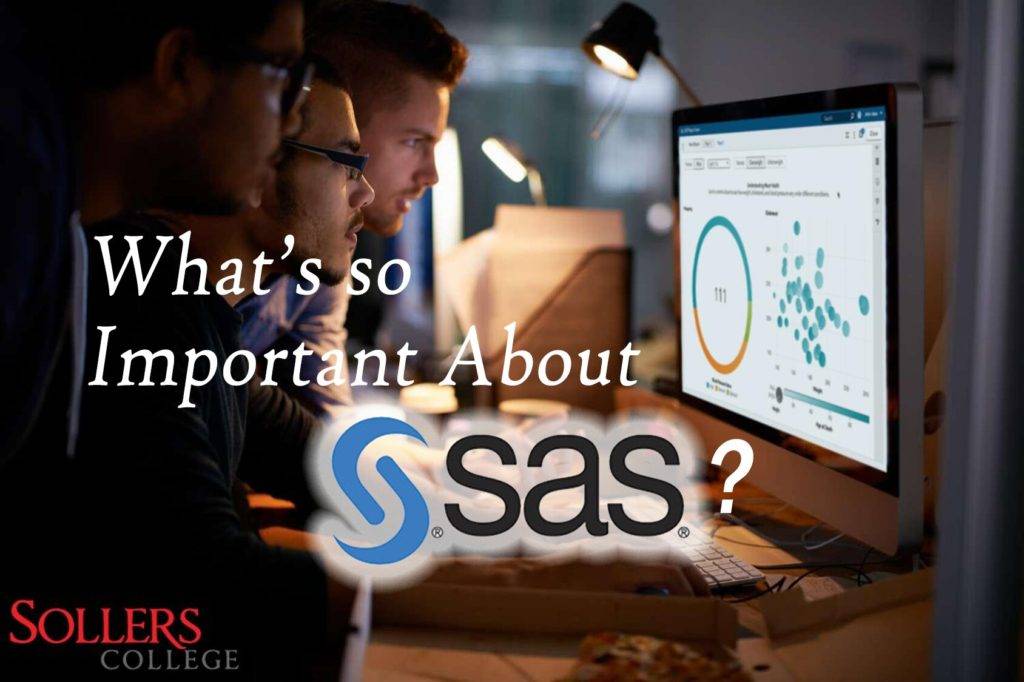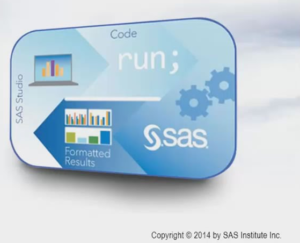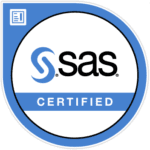Statistical Analysis System, or SAS, has been the industry standard for data management and analytics of large volumes of data. It’s a very flexible platform that provides users various means to manipulate, analyze, process, and report on data.
 What is SAS Used for?
What is SAS Used for?
Imagine AstraZeneca managing the production, provenance, current location, destination, or pharmacy customer for every pill produced. Imagine Lufthansa managing the air tickets and flight data for millions of customers every day. Or perhaps Honda tracking the inventory for every vehicle produced and for sale around the world – plus data on which parts are included in which models at any given location; in case of a product recall? These are all examples of things that can be done with SAS. AstraZeneca, Lufthansa, and Honda are all companies that use SAS in their everyday business. SAS is an invaluable tool for business in the 21st century.
Why Not Just Use Spreadsheets, such as Google Sheets or Microsoft Excel?
 Well, the difference is twofold: Firstly, platforms like SAS allow you to use vast amounts of data, compared to Excel. Using any of the sample usage examples above: imagine trying to keep all of those records in an Excel file? That would be impractical, if not downright impossible! SAS provides the infrastructure for keeping such large volumes of data, in a useable and manageable format. Secondly: SAS allows programmers to perform data manipulation and analysis to a degree that Excel can only dream about. Remember that programs like Microsoft Excel or Google Sheets are spreadsheets. Spreadsheet programs are designed for accountants, mathematicians, or other users of “small data” to manage data and information that might otherwise be performed by hand.
Well, the difference is twofold: Firstly, platforms like SAS allow you to use vast amounts of data, compared to Excel. Using any of the sample usage examples above: imagine trying to keep all of those records in an Excel file? That would be impractical, if not downright impossible! SAS provides the infrastructure for keeping such large volumes of data, in a useable and manageable format. Secondly: SAS allows programmers to perform data manipulation and analysis to a degree that Excel can only dream about. Remember that programs like Microsoft Excel or Google Sheets are spreadsheets. Spreadsheet programs are designed for accountants, mathematicians, or other users of “small data” to manage data and information that might otherwise be performed by hand.
Of course, the tradeoff is that Spreadsheet programs are much easier to pick up and use, compared to complex data management platforms such as SAS. If Excel is the handy wheelbarrow you might use to help with landscaping your yard: SAS is the fleet of dump trucks and bulldozers that help build entire cities! Needless to say: getting up to speed in the latest SAS platform requires dedicated training and certification.
What Are the Different Types of Certification for SAS Programming?
The SAS Institute maintains a variety of different certifications specifically designed for the needs of particular job functions and particular industries. However, they all share in common a level of foundations in general SAS programming. These include the following:
- Base SAS Programming Credentials – This is the first step in the SAS Global Certification Program. It ensures a basic understanding of programming principles using the base SAS 9.4 product.
- SAS Certified Advanced Programmer – The program assumes that the student has already passed the Base exam. It covers more advanced topics in programming such as Macros, program flow, and more advanced data modelling.
- SAS Certified Clinical Trials Programmer – This level is designed to help the student apply SAS programming and data management knowledge specifically towards the healthcare, pharmaceutical, and clinical research industries.
How Do I Get Started in SAS?
The SAS website itself (www.sas.com) offers certification exams directly, and also provides some training materials. However, most students – including many SAS professionals – prefer a more structured program that includes dedicated instruction, tutors, support, and guidance.
 If you are looking for an in-depth program to help teach you everything you need in order to get started (or to advance) your career with SAS, then give us a call here at Sollers College to see if we can help. Sollers offers specific courses to learn Base SAS, as well as programs on the more advanced topics. Presently, Sollers has created a new certification program in Clinical Data Science that combines all of the programs into one – it’s available for life sciences professionals with no prior SAS background; and will provide training in all necessary areas of SAS programming and clinical research to prepare student professionals for roles within a leading CRO, or other healthcare programming position.
If you are looking for an in-depth program to help teach you everything you need in order to get started (or to advance) your career with SAS, then give us a call here at Sollers College to see if we can help. Sollers offers specific courses to learn Base SAS, as well as programs on the more advanced topics. Presently, Sollers has created a new certification program in Clinical Data Science that combines all of the programs into one – it’s available for life sciences professionals with no prior SAS background; and will provide training in all necessary areas of SAS programming and clinical research to prepare student professionals for roles within a leading CRO, or other healthcare programming position.
Sollers offers evening and weekend classes, either online or at our campus in Edison, NJ. We can provide you with the software, student support services, class outlines, internship opportunities, and career support services to help you get the job; once you get the training! Email us at admissions@sollers.college, or call us at (908) 416-1230 with any questions. In the meantime, you can check out the complete Clinical Data Science program mentioned above. Otherwise, take a look at our website to learn about all of the different programming courses at Sollers, from Base SAS through Advanced SAS and above!



